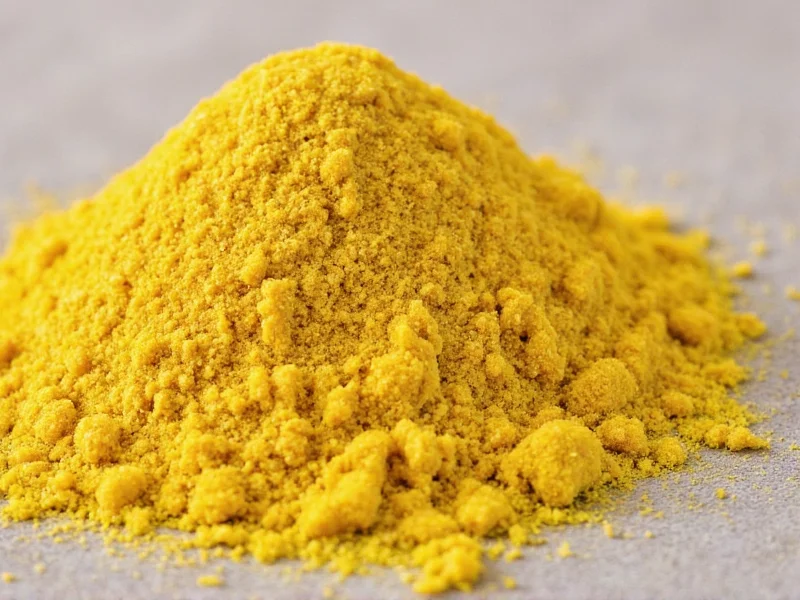When following recipes, encountering both "ground mustard" and "prepared mustard" can cause confusion. These two mustard forms serve different culinary purposes despite sharing the same foundational ingredient. Let's explore their characteristics, uses, and whether substitution is possible.
What Exactly Is Ground Mustard?
Ground mustard, sometimes labeled as mustard powder or dry mustard, consists of finely milled mustard seeds that have been dried and pulverized. This spice appears as a bright yellow to golden powder with a relatively mild aroma in its dry state. The magic happens when liquid activates the enzymes in ground mustard, releasing its characteristic pungent flavor.
Chefs and home cooks use ground mustard primarily as a seasoning ingredient rather than a condiment. It's commonly found in spice blends, rubs, marinades, and as a thickening agent in sauces. Many classic recipes, particularly older ones, specify ground mustard because it has better shelf stability than prepared versions.
Understanding Prepared Mustard
Prepared mustard refers to the familiar condiment you find in jars and squeeze bottles. This ready-to-use product combines ground mustard seeds with vinegar, water, salt, and often additional spices, sweeteners, or flavorings. The preparation process allows the enzymes in mustard seeds to react with liquid, creating the sharp, pungent flavor we associate with mustard.
Commercial prepared mustards vary widely in flavor profile depending on the mustard seed variety used (yellow, brown, or black), the liquid components, and additional ingredients. From mild yellow mustard to spicy brown and complex Dijon varieties, these differences significantly impact recipe outcomes.
Key Differences Between Ground and Prepared Mustard
| Characteristic | Ground Mustard | Prepared Mustard |
|---|---|---|
| Form | Dry powder | Ready-to-use paste/sauce |
| Shelf Life | 1-2 years when stored properly | 1-2 months after opening |
| Flavor Activation | Requires liquid to develop full flavor | Flavor fully developed |
| Primary Use | Seasoning ingredient in recipes | Condiment or finished sauce component |
| Substitution Ratio | 1 teaspoon ground mustard = 1 tablespoon prepared mustard | 3 teaspoons prepared mustard = 1 teaspoon ground mustard |
Can You Substitute One for the Other?
While ground mustard and prepared mustard aren't interchangeable without adjustments, substitution is possible with proper conversion. Understanding the difference between dry mustard and prepared mustard ratios prevents recipe disasters.
When substituting ground mustard for prepared mustard in recipes, use this guideline: 1 teaspoon of ground mustard equals approximately 1 tablespoon of prepared mustard. However, remember that ground mustard needs liquid and time to activate its flavor—typically 10-15 minutes. Adding it directly to dry ingredients won't yield the same results as using prepared mustard.
Conversely, if replacing ground mustard with prepared mustard, reduce other liquids in the recipe accordingly. For every tablespoon of prepared mustard substituted for 1 teaspoon of ground mustard, decrease additional liquids by about 2 teaspoons to maintain proper consistency.
Practical Applications in Cooking
Certain recipes specifically call for ground mustard because its delayed activation creates different flavor development. In cheese sauces, for example, ground mustard blends more smoothly and provides a more gradual flavor release. In barbecue rubs, its dry form helps create the proper texture.
Prepared mustard shines when immediate flavor impact is needed, such as in salad dressings, sandwich spreads, or as a finishing sauce. The difference between ground mustard and yellow mustard becomes particularly important in recipes where texture and moisture content matter.
Creating Homemade Prepared Mustard
Understanding how to make prepared mustard from ground mustard gives you control over flavor profiles. Combine 1 tablespoon of ground mustard with 2 tablespoons of cold water, 1 tablespoon of vinegar, and a pinch of salt. Let the mixture sit for 10-15 minutes to allow the enzymes to activate, then adjust seasoning to taste.
This simple preparation lets you customize heat level and flavor intensity—add honey for sweetness, turmeric for color, or different vinegars for complexity. When exploring the difference between dry mustard and prepared mustard through homemade versions, you'll notice how variables affect the final product.
Common Mustard Varieties and Their Uses
Not all mustards behave the same, whether in ground or prepared form. Yellow mustard seeds produce milder flavor, while brown and black seeds create more pungent results. This explains why some recipes specify particular mustard types when asking about ground mustard vs prepared mustard applications.
Dijon mustard, for instance, uses brown mustard seeds and white wine, creating a sharper profile than standard yellow prepared mustard. When substituting, consider these flavor differences—using Dijon where yellow mustard is specified can dramatically alter your dish's character.
Storage and Shelf Life Considerations
Proper storage affects both forms differently. Ground mustard maintains quality for 1-2 years when stored in an airtight container away from light and moisture. Prepared mustard typically lasts 1-2 months after opening when refrigerated.
The difference between ground mustard and prepared mustard extends to their degradation patterns. Ground mustard gradually loses potency but remains safe indefinitely, while prepared mustard can develop off-flavors or mold when past its prime. Always check expiration dates when considering mustard powder substitute options for prepared mustard.











 浙公网安备
33010002000092号
浙公网安备
33010002000092号 浙B2-20120091-4
浙B2-20120091-4